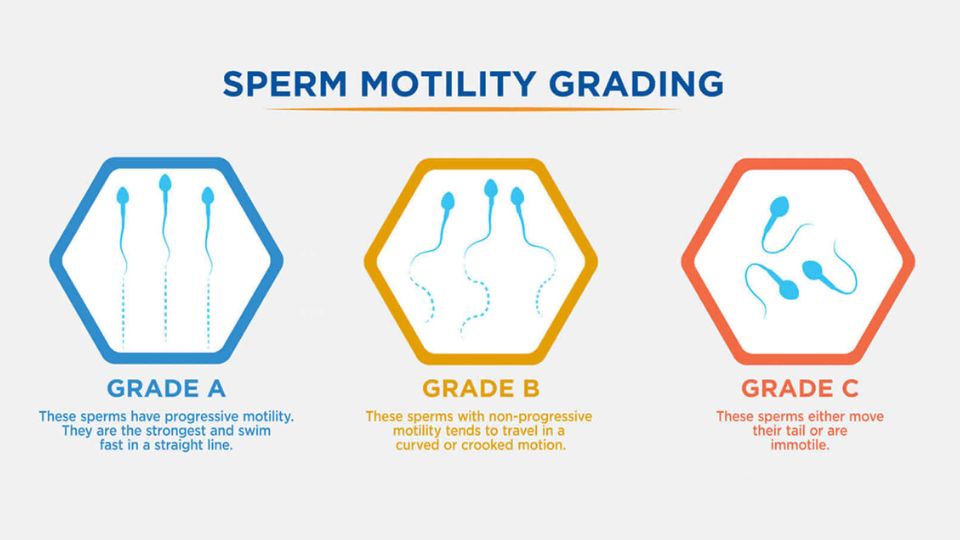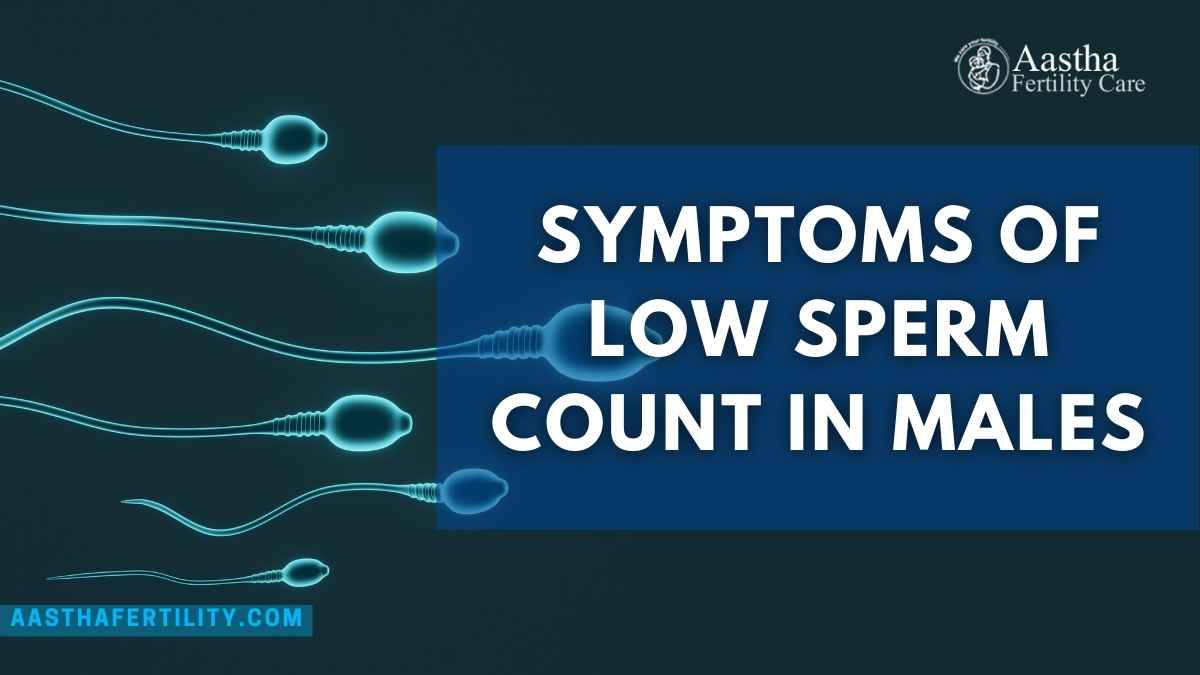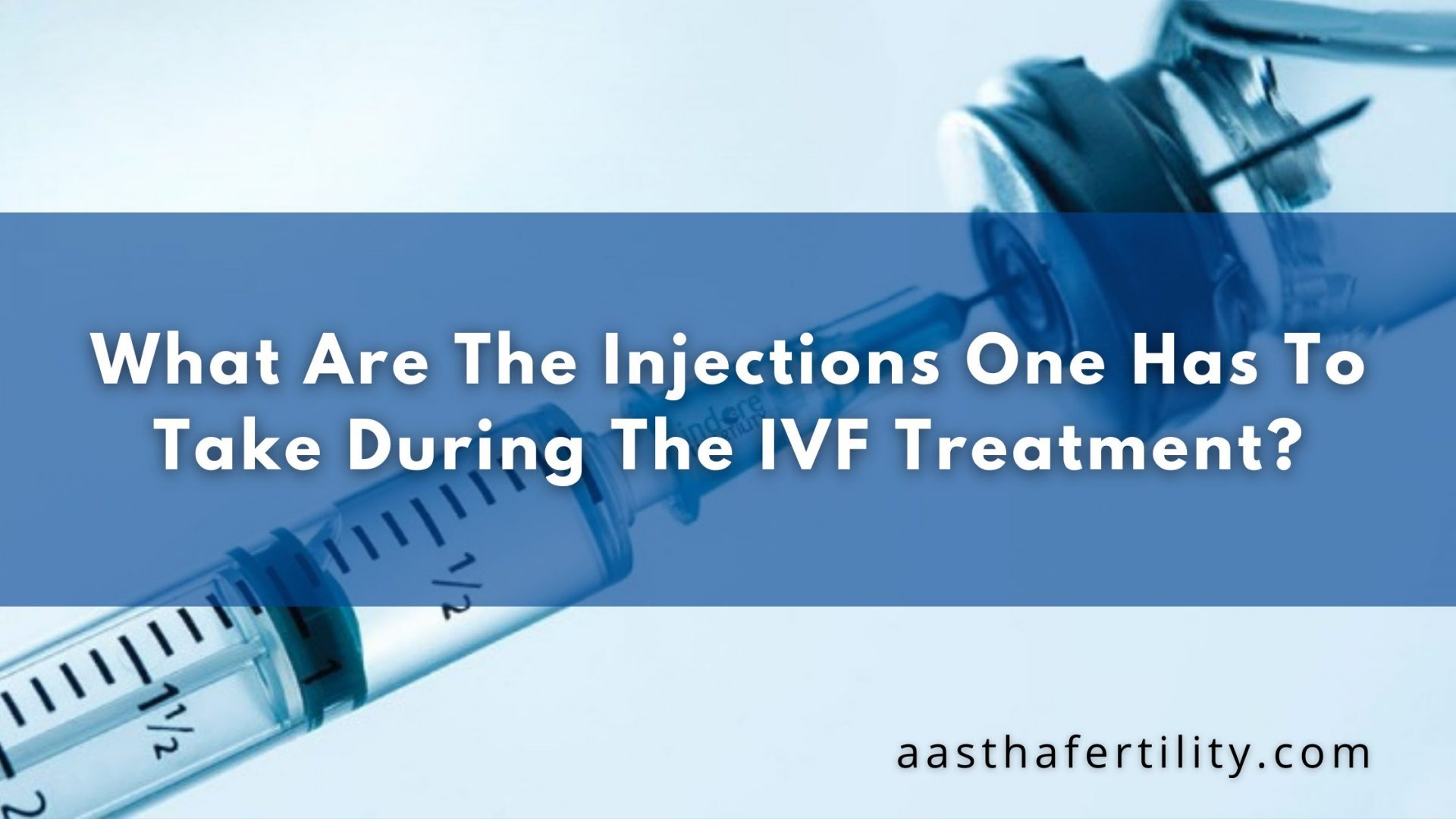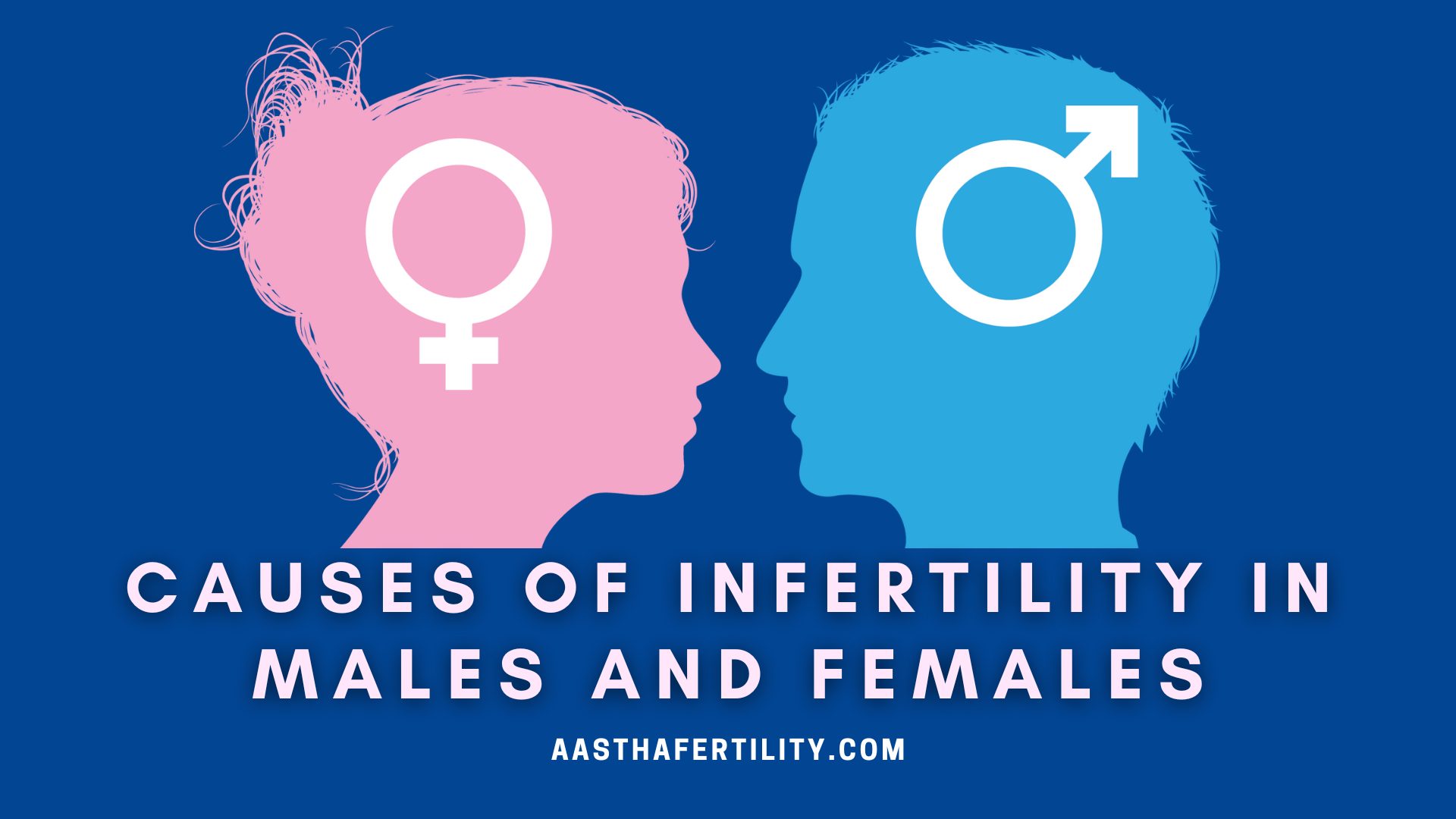Table of Contents
Toggle
The ability of sperm to move efficiently is called sperm motility. Sperm motility is a vital fertility factor because it is needed for sperm to travel through women’s reproductive organs and fertilise the egg. Poor motility of sperm is a sign of Male Fertility Problems.
With infertility being the most common issue among couples these days, arriving at an accurate diagnosis and identifying effective fertility treatment timely is one of the main factors for healing. Most infertility cases involve complex and multiple factors, some of which are known, and others, the unknown ones, are speculated. The more experts can pinpoint the issue, the more helping hands it will provide for effective treatment.
More than 15-20% of the couples worldwide face difficulties getting pregnant, affected by infertility issues. Of this number, 30-40% of the cases land on male infertility issues, sperm motility contributing to 60%. Another 20-22% of the couple experience the same due to combinational factors, with male and female issues contributing to it.
There’s nothing to panic about if you and your partner got your reports tested for fertility issues and diagnosed with low sperm motility. Experts at Aastha Fertility Care have the best course of treatments that will improve the couple’s chances of conceiving, assuring immediate and assured positive results.
Please read the blog as we guide you through the details of sperm motility, treatments, and causes to get a clear view of the infertility issue.
What is Sperm Motility?

Sperm health is a vital factor affecting the couple’s ability to conceive. Healthy sperm is, therefore, a combination of six main criteria-
- Shape,
- Motility,
- Volume,
- Acrosome reaction,
- Nuclear Decondensation,
- Ability to pass through women’s reproductive tract,
- Zone pellucida binding.
A breakdown or issue with any of these criteria results in positive male infertility reports, arising difficulties for the couple while conceiving.
Motility refers to the movement of sperm, its ability to swim appropriately through water, or women’s reproductive tract to fertilize the eggs. Sperm are ranked based on letter grades, from A to D, to find the sperm motility index. A is for the most active, fastest, and straightest swimmers, whereas D is for those who do not show any movement.
If the test sample ranks only 25-30% of the sperms in the A grade, this reflects low sperm motility, referred to as asthenozoospermia or asthenospermia.
As determined by WHO (World Health Organization), sperm analysis results vary from person to person. Sperm Motility Index by WHO says:
| WHO Reference Range | |
|---|---|
| Total Motility (Non-Progressive and Progressive) | 40-81% |
| Progressive Motility | 32-75% |
| Sperm Morphology | 4-48% |
Current Insights and Latest Updates in Sperm Motility
According to a recent study published in Springer, spermatozoa’s progressive motility is affected by various factors. It begins with:
Varicocele
This common chronic factor is caused due to dilation of veins (abnormally) in the scrotum leading to blunting of the regular parameters of the semen.
Genetic Abnormalities
Shreds of evidence have proven that poor motility of sperm is associated with genetic defects.
Mutations In Mitochondrial DNA & Sperm Motility
Several studies indicate that sperm motility and male infertility are linked to Deletions in Mitochondrial DNA.
ASAs A.K.A Antisperm Antibodies
ASAs are an autoimmune condition caused by poor sperm motility that severely impacts male fertility.
Besides the above risk factors, studies have also shown that sperm motility has improved as well:
Pieces of evidence have shown that-
- Oral supplementation of antioxidants, synthetic drugs and natural compounds has significantly improved the sperm’s motility rate.
- A combination of micronutrients such as l-arginine, zinc, glutathione, folic acid, coenzyme, l-carnitine, vitamin E, and selenium have shown magnificent results in improving the sperm’s motility rate.
- Furthermore, avanafil and pentoxifylline (pharmacological agents) have also shown phenomenal results in stimulating sperm motility.
Low Sperm Count vs Low Sperm Motility
No motility, sluggish or slow motility or non-progressive motility sums up the sperm motility issues. These two terms sound similar but explain two different topics. Low Sperm motility is when you have a healthy sperm count but still face some problems while conceiving. Sperm shape also plays a role in sperm motility.
Furthermore, low sperm count means that fluid that men ejaculate during an orgasm contains fewer sperm than average. This condition is known as oligospermia, and the complete absence of sperm refers to azoospermia.
What is Progressive or Normal Sperm Motility?
Progressive sperm motility means the sperm can swim in a straight pattern and effectively reach their destination. This term is used to describe healthy, well-functioning sperm. Progressively motile sperm move at 25 micrometers in a second. To be deemed, as usual, more than 30-32% of the sperms need to be progressively motile.
What is Slow and Non-Progressive Motility?
In non-progressive or slow sperm motility, the sperm is still motile but cannot travel in a straight line. In sluggish sperm motility, the sperm travels at a speed of fewer than 25 micrometers per second, and in non-progressive sperm motility, it spans less than 5 micrometers per second.
Causes of Low Sperm Motility
The exact reason for sperm motility varies from individual to individual. Some of the possible causes for the sluggish sperm movement are:
- Genetic problems
- Undiagnosed medical conditions
- Environmental and Lifestyle Factors
- Stress
- Poor diet
- Smoking or drinking
- Excessive heat
- Trauma to the pelvic area
- Enlargement in the veins inside the scrotum, also known as Varicocele.
Lifestyle and Environmental Factors Affecting Sperm Motility
Environmental Factors
Declining semen quality is among the primary reasons for increased infertility cases in the last few years that affect sperm motility. Many lifestyle and environmental factors that affect sperm motility include exposing yourself to excessive heat to facilitate job requirements, air pollution, and using harmful chemicals and pesticides.
Additionally, indirect or direct contact with many other hazardous elements, catalyst agents, or substances contaminated with chemicals or toxins can also affect sperm motility or lead to low sperm motility.
Lifestyle Factors
Many lifestyle factors or living habits significantly contribute to sperm motility, including consuming illicit drugs, excessive coffee, alcohol intake, and smoking. Dietary practices, advanced age for paternity, obesity, and psychological stress may also affect sperm motility.
These are among the most potential lifestyle risk factors that affect sperm motility or impair fertility in men.
Diagnosis
Semen analysis is ordered to test the sperm motility index. A patient needs to provide the semen samples to the lab for analysis. These are usually obtained at the fertility expert’s office by masturbation. Individuals are also given an option to acquire the sample while having protected sex with a condom. Therefore, the sample withdrawn at home needs to be stored at room temperature and delivered between 30-60 minutes to the facility.
During the analysis, if more than 35-40% of the sperm are found slow or non-progressive, the patient is considered to be suffering from low sperm motility.
Low Sperm Motility Treatment
Sperm motility is a curable infertility issue. Some positive changes in your daily lifestyle will help you with an increased number of progressive sperms-
- Reduce Alcohol Intake and Stop Smoking
- Maintain a healthy weight
- Exercise regularly
- Wear loose boxer shorts to improve the semen quality
- Limit exposure to screen to reduce the radiations and radiofrequency
If Varicocele or low hormone levels are the reason for the motility issue, experts will advise some medicine for progressive movements, including human chorionic gonadotrophin or FSH. Other than this, some portions of selenium with Vitamin E are also known to increase sperm motility.
Consult your physician before switching to any doses or taking any supplements, and place orders for the same from reputable vendors to avoid any duplication risks.
Natural Remedies and Exercises to Boost Sperm Motility
Incorporating better lifestyle options and behavior modification can help overcome the factors affecting sperm motility. People seeking a child must recognise the possible impact and need greater awareness of lifestyle factors affecting sperm motility.
Natural Remedies
When sperm motility, the infertility issue in men, arises, it becomes challenging for them to help their partner conceive a child. Since smoking and consuming damages DNA in the sperm, quitting it will improve overall reproductive health with increased sperm motility.
Consumption of garlic, Ashwagandha, green tea, Saw Palmetto, zinc, and lemon can also improve sperm quality while also significantly improving sperm motility.
Exercise
Swimming, cycling, jogging, and many other cardiovascular workouts can greatly influence and boost sperm motility and its quality and improve blood circulation to reproductive organs. Resistance training, such as lifting body weights, weight lifting, and some other strength training exercises, can improve sperm motility and testosterone levels.
It also assists in boosting fertility and sperm motility. Kegel exercises strengthen the muscles of the pelvic floor while improving sperm motility, count, and controlled ejaculation.
Some Common Medications for Low Sperm Motility Treatment
The following is a list of medicine that doctors commonly prescribe:
- Clomiphene citrate (Clomid)
- HCG and HMG
- Anastrozole (Arimidex)
Along with the above medicine, here is a list of alternative medications (supplements) that are also effective at boosting sperm motility:
- Vitamin C
- Maca root
- Vitamin D
- Ashwagandha
- Zinc
- Fenugreek
Medical Treatment for Low Sperm Motility
The low motility of sperm can lead to infertility in men; however, there are some treatments which may cure infertility in men:
Ultrasound Treatment To Boost Sperm Motility
Researchers have found that using a high-frequency ultrasound treatment can boost the sperm’s motility and enhance the sperm’s ability 30 times faster to get through the fallopian tubes.
Also, an ultrasound exposure for 20 seconds further enhances the sperm’s motility rate by 30%.
IUI And Low Sperm Motility
IUI, also known as Intrauterine insemination, is a treatment in which the male partner has to provide a sample of his semen which will be washed in the laboratory by a team of experts. This allows fast-moving or active sperm cells to be separated from the fluid and directly placed within the uterus.
Doctors recommend that male partners refrain from ejaculating three to four days before IUI treatments to maintain high sperm counts.
Asthenozoospermia and ICSI
This treatment, known as Intracytoplasmic Sperm Injection (IUI), is done when
- When the male has a meagre sperm count (Oligospermia)
- Sperm has an abnormal shape (Teratozoospermia)
- Sperm’s poor motility (Asthenozoospermia)
The need for this treatment arises when a man ejaculates, but his fluid doesn’t contain sperm. Still, with Intracytoplasmic Sperm Injection, sperm can be retrieved via testicular sperm extraction or TESE.
Food for Sperm Motility
Switching to healthy food habits will also positively impact sperm motility. Foods that can improve Sperm count and motility index include:
Walnuts
Consuming around 18-20 walnuts a day for 12 weeks continuously can help with improved sperm motility.
Fish
A high content of fatty acids and Omega 3 also helps improve the sperm motility index, and fish is the richest source of Omega-3.
Vegetables and Fruits
Fruits and vegetables rich in antioxidants and vitamins help prevent cell damage, increasing sperm motility index.
Approach To Male Infertility in India
The topic of male reproductive health is seldom discussed in India because male infertility is still viewed as taboo. However, even if male infertility is acknowledged, disappointment and humiliation usually accompany it.
The powerlessness to procreate leads to psychological and emotional distress in men.
So to cope with this emotional grief, men can accommodate themselves by doing the following:
- Start by planning your emotional tumult.
- Manage your emotional stress (talk to your loved ones, express your feelings).
- Practice Yoga and Meditation.
- Spend more time with your partner.
- Do those things which make you happy.
- Take counselling sessions or talk wholly with your doctor.
Conclusion
Male fertility is affected by multiple factors. If the sperm are healthy, the chances of conceiving with low sperm motility are still high. Furthermore, IUI and IVF treatments can help increase the successful chances of pregnancy. These treatments bypass the need for healthy or straight swimmers to cover the path independently and use reproductive technology for the same.
If you are also trying to conceive for more than a year and still not able to get the desired results, then talk to your fertility experts to know the reasons. Your doctor will order a few tests to see the health conditions affecting infertility, determining the next steps for a successful pregnancy treatment.
FAQs Related To Sperm Motility
1. Can a Urologist Help with Low Sperm Count?
Yes, urologists can help you with low sperm counts since they specialise in male reproductive health.
2. What is the Relationship between sperm progressive motility and DNA?
According to the article published in 2017 on Sperm Progressive Motility and DNA, there is a negative correlation between sperm progressive motility and DNA.
3. Does noise stress affect count, progressive and non-progressive?
Yes, according to a study published in science open, it’s been proven that noise pollution or stress has detrimental effects on sperm count and motility.
4. What does non-progressive motility mean?
Non-progressive means the sperm is still motile but cannot travel in a straight line. In non-progressive sperm motility, it spans less than 5 micrometres per second.
6. Can we get pregnant with low sperm motility?
Yes, it is possible to get pregnant despite low sperm motility, but only if the sperm is healthy.
7. How does alcohol and drug use affect sperm motility?
Alcohol consumption and drugs alter sperm motility, count, size, and shape and affect fertility. It causes decreased or early ejaculation, which affects the product of sperm since gonadotropin release changes when men consume heavy alcohol. It also shrinks testes and reduces sperm production due to raised estrogen levels and reduced luteinizing, follicle-stimulating hormones, and testosterone levels, which all affect sperm motility.
8. Are there any specific exercises that can help improve sperm motility?
The most suggested exercises to improve sperm motility are cardiovascular or weight resistance exercises.
9. How does prolonged exposure to heat (like in saunas or hot tubs) impact sperm motility?
Prolonged exposure to heat, like in saunas or hot tubs, significantly impacts sperm motility since it decreases 50% or the sperm count and affects male infertility for the next couple of months.
10. Is there a correlation between stress levels and sperm motility?
The correlation between stress levels and sperm motility is negative as it decreases motility and affects its quality due to the interference with the hormones required to generate sperm.
11. How often should one get tested for sperm motility if trying to conceive?
Sperm examination is required for about three months as two to three samples are required to achieve completely accurate outcomes.
12. Are there any specific foods or supplements to avoid that might negatively impact sperm motility?
Soy products, trans fats, processed meats, dairy products with high fat, and Pesticides and bisphenol (BPA) should be avoided as they negatively impact sperm motility.
13. How does the frequency of ejaculation impact sperm motility?
The frequency of ejaculation impacts sperm motility since dilution issues result in reduced sperm concentration, i.e., its volume and density.
14. How does age affect sperm motility?
Motility decreases in men over 40 years since sperm quality also declines with age. Many males could make thousands and millions of new sperm daily, but with age, the number of healthy sperm is quite a few in contrast to men younger than forty years.
The decline of semen amount and motility is constant in men from the age of 20 to 80.





Leave a comment